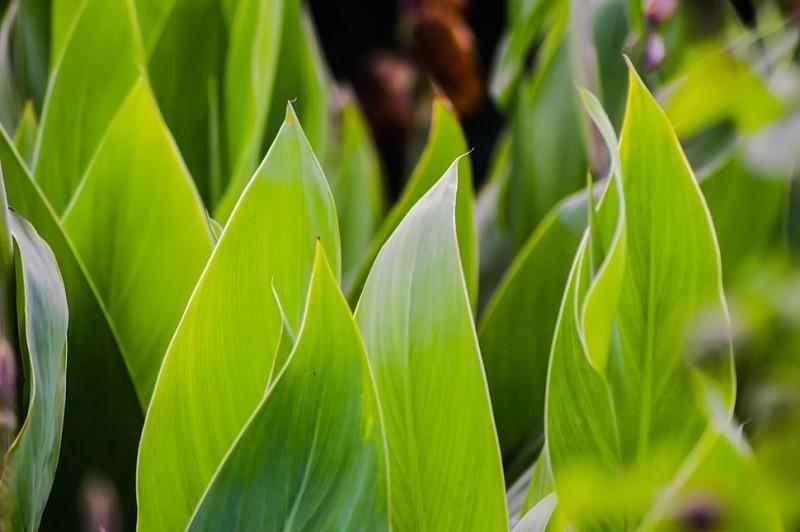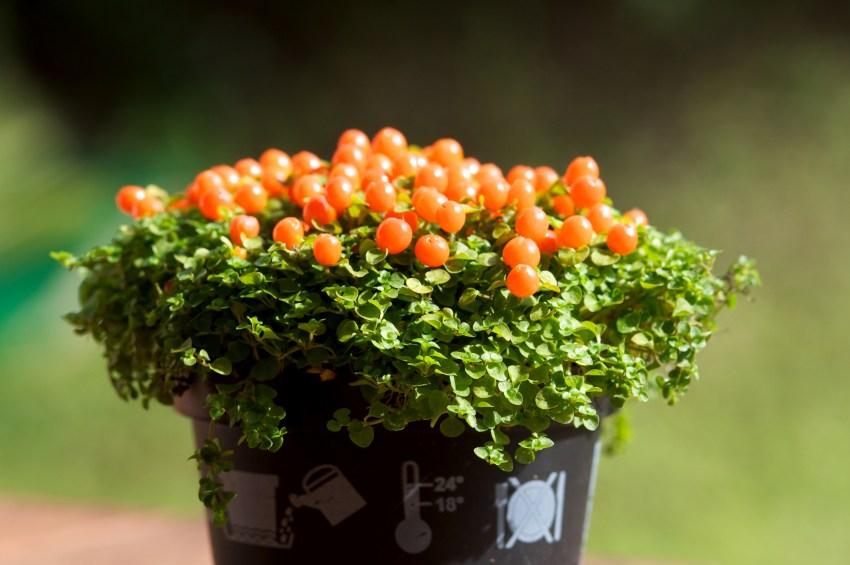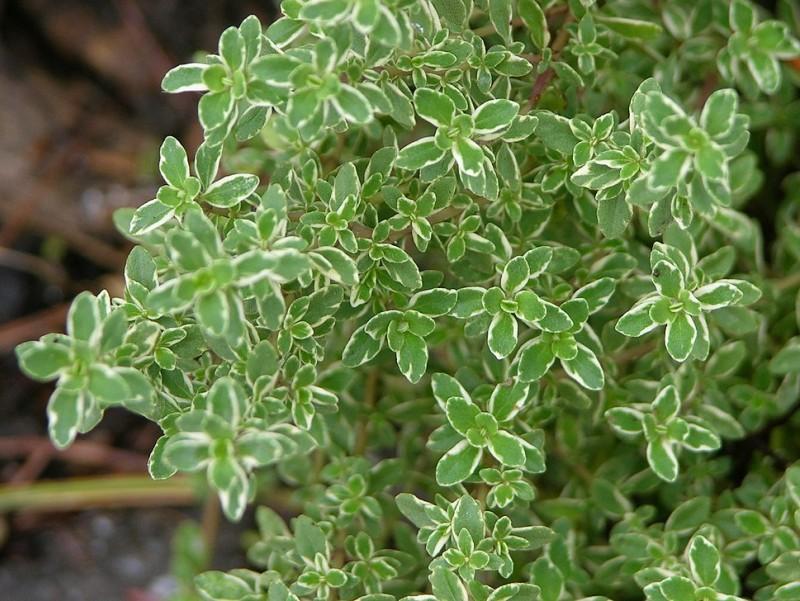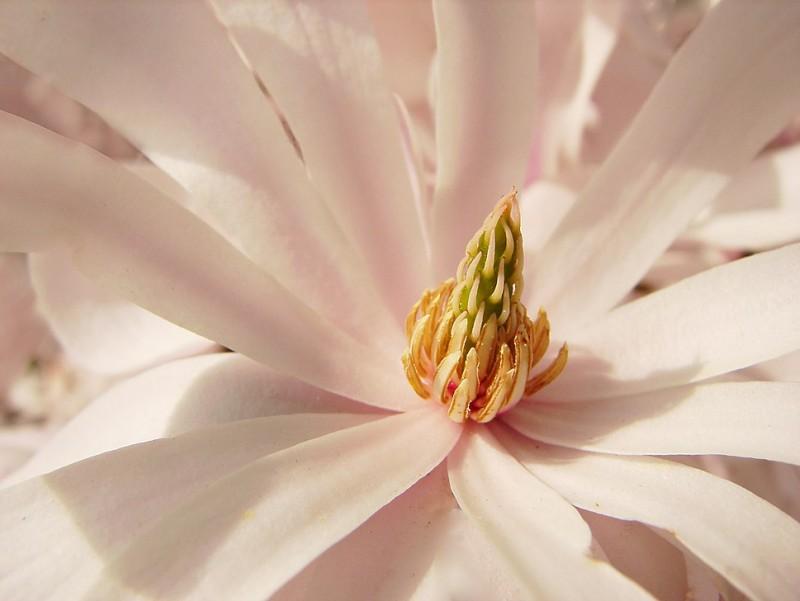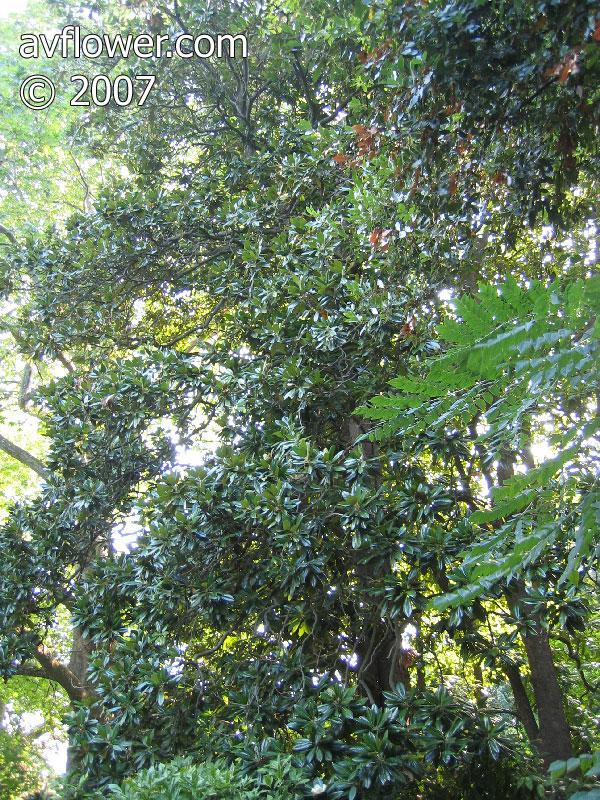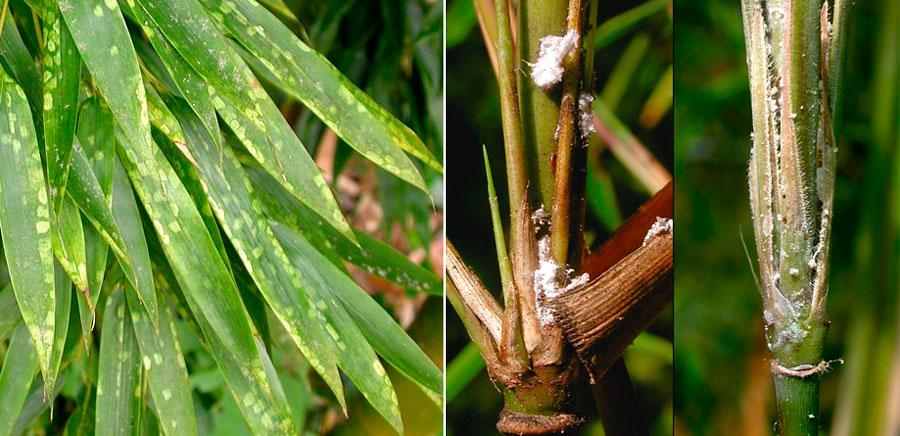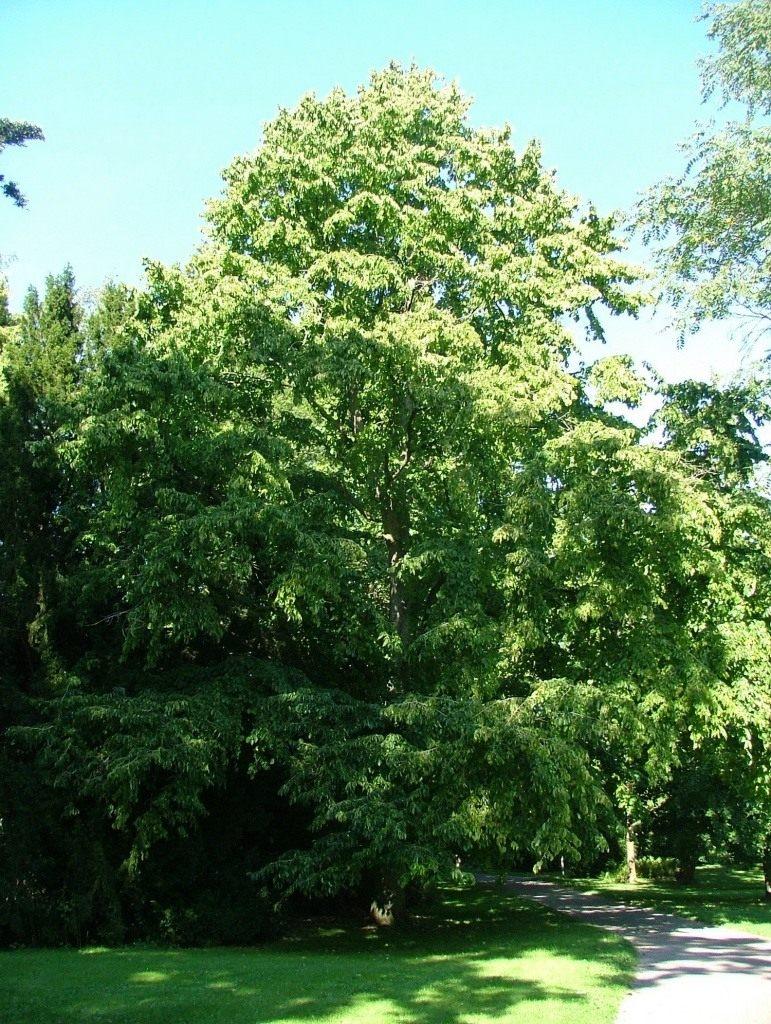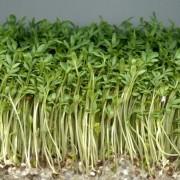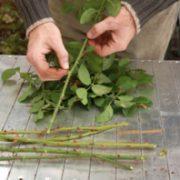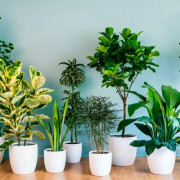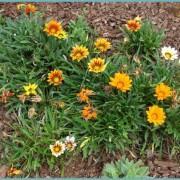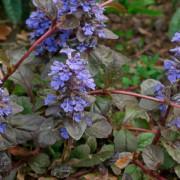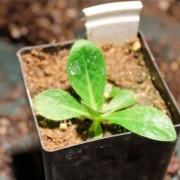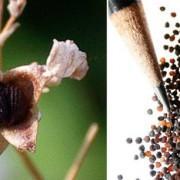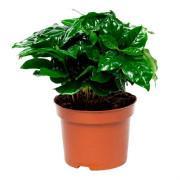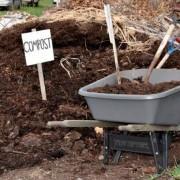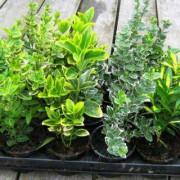Миллениум. Тетралогия. ЛП
Содержание:
Ecology
Fire
L. lanigerum has a very specific relationship with fire. Like many other species within the family Myrtaceae, the seeds of L. lanigerum are encased in woody capsules and often remain on the tree for a number of years after reaching maturity. To be released, capsules must be subjected to fire or some other disturbance. In the days after fire, the ash enriched seed bed along with a little rain provides good conditions for seeds to germinate. The intensity of the fire is important, as too much heat can destroy the seeds as well as the capsules.
Hairy, woody capsules of L. lanigerum.
Trees can also grow back after a fire, due to the lignotubers and epicormic buds protected by the thick bark. In some cases, where trees are tightly packed, the fire destroys only the main branches leaving the underground portions and protected trunks of the plants to survive. As plants grow back after a fire, other species can take advantage of the light gaps created, leading to a thick mixture of tea-tree, cutting grass and species such as Bauera.
Pollination
Leptospermum species are pollinated by insects, usually beetles. Each flower contains sweet nectar within the centre which acts as an attractant to beetles. These beetles then carry pollen on all parts of their body, mainly head and legs, to other flowers. The nectar, along with the insects present, also attracts other animals such as birds, making Leptospermum species and other Myrtaceae genera popular garden plants.
Seed dispersal
Seed dispersal of L. lanigerum is limited, with seeds usually falling to the ground after fire. Dispersal can also occur through wind or water, or transport by insects such as ants. Ants also act as pre-dispersal seed predators however, destroying the capsules whilst still attached to the plant and eating the seeds. L. lanigerum is one of the Leptospermum species most affected by ant predation.
Other symbiotic relationships
Most Myrtaceae species (including the genus Leptospermum) are mycorrhizal, forming relationships with fungi to assist in increasing root surface area for greater uptake in nutrients. The extent to which this relationship exists is unknown however, with little research available.
Diseases
Leptospermum lanigerum is a potentially highly susceptible host species to the pathogen Phytophthora ramorum. This pathogen currently causes widespread damage to gardens, nurseries and natural habitats in America and Europe, and although is not currently present in Australia, has been identified as a potential problem that may have widespread effects throughout Australia in the future.
A number of insects also act as pests and parasites. The Webbing Caterpillar causes damage to many young Leptospermum species, using webbing to matt the leaves together and deposit droppings inside. Scale insects can suck the sap from stems and leaves and secrete a substance that causes sooty mould to grow, blackening the foliage.
Propagation and cultivation
Leptospermum lanigerum is an adaptable species that can tolerate most soils and aspects. Plants are often propagated from seedlings or cuttings and sold in nurseries for garden use. This species is a popular garden plant, due to its attractive flowers and adaptability. Three main forms are known; a large, spreading or erect shrub to 3 m high and 3 m across, a compact columnar shrub to 3 m high by 1 m wide and a slender tree up to 18 m tall (only in Tasmania).
The white, 5-petaled flowers of L. lanigerum.
Distribution and Habitat
Distribution of L. lanigerum in Australia.
Leptospermum lanigerum is endemic to Australia, mainly distributed within the south eastern states. Native populations are found in eastern South Australia, across Victoria and southern New South Wales, as well as the whole of Tasmania. Plants are common and widespread, predominantly found in wet, swampy areas and along river banks, sandy coastal heaths or within woodlands.L. lanigerum is occasionally found growing in cool temperate rainforest in western Tasmania, however is a doubtful true rainforest species due to the need for disturbances such as fire to release seed. The hardy nature and preferred habitat of this plant makes it useful in riparian restoration and stream bank stabilisation, as they thrive in swampy areas where many other species do not.
In Tasmania, L. lanigerum is a key swamp forest species. Swamp forests form in flat, poorly drained sites and contain a closed tree canopy made from sclerophyllous species of the genera Leptospermum, Acacia and Melaleuca. In Tasmania, L. lanigerum forms tall, dense stands, up to 18m in height. In other Australian states, individuals mainly exist as short, thick shrubs.
Although this species is mainly present at low altitudes, some individuals also grow among sub-alpine vegetation and along the edge of montane grasslands.L. lanigerum is an adaptable species able to adjust to varying aspects and soil types, and although prefers wet areas can grow successfully in drier soil.
L.lanigerum trees growing in Tasmania.
Description
This small tree to medium-sized shrub is variable in size and shape and present in a number of different forms. Plants can grow as large, spreading or erect shrubs up to 3 metres (9.8 ft) high by 3 metres (9.8 ft) across, or very compact, columnar shrubs, up to 3 m high and 1 metre (3.3 ft) across.L. lanigerum also grows as a slender tree up to 18 metres (59 ft) tall in montane habitats in Tasmania.
Hairy leaves and stem of L. lanigerum.
Hairy, new L. lanigerum buds.
Leaves
Leaves are usually alternately arranged along the stem, oblong in shape and with slightly rolled margins. Leaves vary in size from 4–20 millimetres (0.16–0.79 in), with new growth usually covered in small, soft, silky hairs. These hairs usually cause the foliage to appear silvery grey, however leaves can vary in colour from silvery grey to dark green, or occasionally possess a glossy upper surface. Like all species in the family Myrtaceae, L. lanigerum leaves are dotted with small oil containing glands, and when crushed emit a strong, characteristic aroma. These oil glands allow for easy identification, and detailed analysis of the oils has assisted in the classification and taxonomy of species within the genus Leptospermum.
Flowers
Leptospermum lanigerum bears the characteristic flowers present within the genus Leptospermum: five distinctly separate, white petals, five small sepals, numerous stamens, along with inferior ovaries.Receptacles and petals grow small soft hairs, with flowers usually measuring about 18mm in diameter. The stamens usually occur in bundles of seven. Numerous flowers are produced either in late spring, early summer or sporadically throughout the year, situated terminally on short side branches. These flowers are mostly bisexual, however L. lanigerum is an andromonoecious species as plants also produce some functionally male flowers.
Smooth, papery L. lanigerum bark.
Fruit
Distinctly hairy when first produced, capsules are usually persistent, each with 4–5 compartments and around 5–10 millimetres (0.20–0.39 in) in diameter. These capsules are situated singularly on short, terminal side branches, distinguishable from Melaleuca spp. whose capsules clasp the stem in distinctive clusters. Encasing seeds in tough, woody capsules provides some protection from damage by predators or insulation from disturbances such as fire. Extreme desiccation or fire is needed, however, to open these capsules, allowing seeds to be released to germinate in the ash enriched seed bed after the first rains following the fire.
Bark
Leptospermum lanigerum has smooth, light brown, fibrous and papery bark that comes away from the trunk in long strips when removed. This bark helps provide some protection to the trunk and epicormic buds from fire, allowing the tree to potentially grow back when burnt. The bark is very similar to other Leptospermum species.
Description
Plants in the genus Leptospermum range in size from prostrate shrubs to small trees and have fibrous, flaky or papery bark. The leaves are arranged alternately and are relatively small, rigid and often aromatic when crushed. The flowers may be solitary or in groups and have and which in most species fall off as the flower opens. There are five spreading, conspicuous petals which are white, pink or red. There are many stamens which are usually shorter than the petals and in five groups opposite the stamens, although they often appear to not be grouped. A simple style usually arises from a small depression in the ovary which has from three to five sections in most species, each section containing a few to many . The fruit is a woody capsule which opens at the top to release the seeds, although in some species this does not occur until the plant, or the part of it, dies.
Лептоспермум — уход и выращивание
Температура: Летом обычная, оптимально 24-26°C, зимой необходимо очень прохладное содержание, при температуре 7-8°C, но не выше 12°C, при очень ограниченном, скудном поливе.
Освещение: Как и все миртовые, лептоспермум светолюбив, ему необходимо определенное количество прямого солнца, притенение в основном не требуется, но весной к яркому солнцу приучают постепенно. На прямом солнце летом лептоспермум страдает не от солнечных лучей, а от жары, поэтому лучше растения переставить в более прохладное место.
Полив: Обильный с весны до осени, после высыхания верхнего слоя земли. Зимой поливают редко, но, не допуская полной пересушки земляного кома. Если почва слишком сильно пересохнет, растение может погибнуть. Лептоспермум не терпит жесткой воды, поэтому используйте кипяченую или фильтрованную воду. Признаком потребности в поливе у лептоспермума будет поникание кончиков побегов — они становятся вялыми, но после полива тургор восстанавливается. Длительную пересушку, как и переувлажнение не терпит.
Удобрение: С марта по август мирт подкармливают удобрением для азалий или бонсай. Подкормки каждые две недели.
Влажность воздуха: Весной и летом нуждается в увлажнении воздуха.
Пересадка: Ежегодно весной. Почва должна иметь слабокислую или кислую реакцию. Смесь: 2-3 части дерновой, 1 часть торфяной земли, 1 часть перегнойной, 1 часть песка. Можно использовать готовые почвенные смеси для азалий и рододендронов. Почва должна быть достаточно рыхлой, воздухопроницаемой.
Размножение: Черенками весной и летом, семенами. Черенки втыкают сразу в горшочки, в грунт (смесь вермикулита и торфа), сверху закрывают банкой или завязывают горшочек в пакет, дважды в день проветривают по 30 минут. Черенки укореняются лучше в феврале-марте в течение 1-1,5 месяцев
Очень важно для укоренения равномерное увлажнение грунта — чтобы он не пересыхал, но и не был переувлажненным. Для этого вместо пакета лучше будет использовать колпак из обрезанной пластиковой бутылки (отрезать дно, крышку убрать)
Убирать укрытие нужно постепенно, плавно приучая молодые растения к более сухому воздуху.
Лептоспермум хорошо формируется обрезкой. С окончанием периода покоя с февраля, можно формировать крону. Обрезать в течение вегетационного периода растения можно неоднократно. Формируют лептоспермум в разных стилях, в том числе штамбовым деревцем. Как культура бонсай лептоспермум ценится за обильную ветвистость, мелкие листья, и склонность коры растрескиваться.
Больше информации по теме: http://iplants.ru
Commonly known as teatrees
Commonly referred to as Teatree, Leptospermum is distributed in Australia, South East Asia (i.e. the Malay peninsula, Sumatra, Borneo, Java, Philippines, Sulawesi, Thailand, Flores, Moluccas, southern Burma and New Guinea) and New Zealand. Whilst Leptospermum occupies a variety of habitats from coastal dunes to high mountain peaks, it is most commonly found in wet or periodically wet substrates that are acidic and low in nutrient content.
Leptospermum is in the sub-family Leptospermoideae of family Myrtaceae and currently comprises 86 recognized species. About 83 species
occur in Australia, all but two endemic. The genus Leptospermum was first recognized by Johann Reinhold Forster and his son Johann Georg Adam Forster when they published the name L. scoparium Forst. & G.Forst. in 1776.
George Bentham was the first to treat the genus in his 1866 Flora Australiensis. Bentham recognized 20 species and his comments that the «… species are very difficult to distinguish» and that from «the dried specimens, whether of the species here admitted or of the varieties or races, I have been unable to discover any positive discriminating characters» are evidence of the problematic nature of the genus. Doubtless, some of these difficulties would have arisen from Bentham’s broad concept of Leptospermum, which included species now assigned to Homalospermum Schauer, Neofabricia J.Thompson and Pericalymma (Endl.) Endl. In 1983 Thompson reinstated the genera Homalospermum and Pericalymma, described Neofabricia (based in part upon the genus Fabricia Gaertner) and then in 1989 published a revision of the genus Leptospermum. Thompson recognized 79 species with 27 of these being described as new. In 1992 Bean described another two species and clarified taxonomic problems associated with two northern Australian and Malesian taxa. In 1993 Lyne and in 1996 Lyne and Crisp published descriptions of another two new species.
The common name tea-tree derives from the practice of early settlers of soaking
the leaves of several species in boiling water to make a tea substitute. Most Leptospermumspecies make desirable garden plants. Flowers are
mostly large, up to 3 cm in diameter, and they are hardy in most soils and aspects.
They are easy to propagate from seed or cuttings. Several cultivars have been
established in the trade for many years. These have originated mainly from L.
scoparium,a species that Australia shares with New Zealand. Most
of the cultivars have developed from New Zealand stock and have occurred as
chance seedlings in nurseries of other countries; that is, the United States,
Ireland and the United Kingdom. With concentrated breeding effort, Australian
species will produce hybrids far superior to these in terms of vigour and disease
resistance. As is well known, most of the L. scopariumcultivars
are prone to scale and the associated black smut. Many Leptospermumspecies make useful screen plants as most have a tight, compact growth.
Species that flower on the new wood may be used as cut flowers.
|
Text used below in this web-site is by John |
Commonly grown Leptospermum species
|
|
|
|
|
|
|
References
- ^ Howells, Christine (2012). Tasmania’s Natural Flora (2nd ed.). Hobart, Tasmania: Australian Plants Society Tasmania Inc. p. 263. ISBN 978-0-909830-66-3.
- ^
- ^
- ^ Wrigley, John; Fagg, Murray (1993). Bottlebrushes Paperbarks and Tea Trees. Sydney, Australia: Angus & Robertson. p. 7. ISBN 0-207-16867-9.
- ^ Wrigley, John; Fagg, Murray (1983). Australian Native Plants (2nd ed.). Sydney, Australia: William Collins Publishers. p. 255. ISBN 0-00-216575-9.
- ^ Wrigley, John & Fagg, Murray 1993, p.198.
- ^ Wrigley, John & Fagg, Murray 1993, p.199.
- Wrigley, John & Fagg, Murray 1993, p.2.
- Curtis, Winifred M.; Morris, Dennis I. (1975). The Student’s Flora of Tasmania (2nd ed.). Tasmania: T.J. Hughes, Government Printer. p. 201.
- Howells, Christine 2012, p. 261–269
- ^
- ^ Wrigley, John & Fagg, Murray 1993, p.16.
- ^ Wapstra, Mark; Wapstra, Annie; Wapstra, Hans (2010). Tasmanian Plant Names Unravelled. Burwood, Victoria: Fullers Bookshop. pp. 200–201. ISBN 978-0-9804720-2-8.
- ^ Wrigley, John & Fagg, Murray 1993, p.18.
- ^ Wrigley, John & Fagg, Murray 1993, p.181.
- Howells, Christine 2012, p.246
- Gibson, N.; Williams, K.; Marsden-Smedley, J.; Brown, M.J. (1987). «Regeneration characteristics of a swamp forest in North Western Tasmania». Papers and Proceedings of the Royal Society of Tasmania. 121: 93–100.
- Reid, James B.; Hill, Robert S.; Brown, Michael J.; Hovenden, Mark J. (1999). Vegetation of Tasmania (Series: Flora of Australia Supplementary Series; no.8). Tasmania: Australian biological Resources Study, a Program of Environment Australia. p. 232. ISBN 0-642-56801-4.
- Reid, James B.; Hill, Robert S.; Brown, Michael J. & Hovenden, Mark J. 1999 p.288
- Forest Resources (1984). Forest Trees of Tasmania. Long Reach, Tasmania: Forest Resources. p. 86.
- Hawkeswood, T.J. (1987). «Pollination of Leptospermum flavescens Sm. (Myrtaceae) by beetles (Coleoptera) in the Blue Mountains, New South Wales, Australia». Giornale Italiano di Entomologia. 3: 261–269.
- ^ Myerscough, Peter J. (1998). «Ecology of Myrtaceae with special reference to the Sydney region». Cunninghamia. 5: 787–807.
- Reid, James B.; Hill, Robert S.; Brown, Michael J. & Hovenden, Mark J. 1999 p.134
Uses
The from the flowers is harvested by ; this is used to make . Honey produced from Australian , also known as jelly bush or the lemon-scented tea tree, has been found to contain up to 1750 mg/kg of » (MGO), an antibacterial compound. However, after neutralization of this compound, the «manuka» honey retains bactericidal activity. Methylglyoxal thus does not appear to be the main contributor to the antimicrobial and antibacterial activities.
In Australia, Leptospermum species are sometimes used as food plants by the of of the genus , including A. lewinii and A. ligniveren. These burrow horizontally into the trunk then vertically down.
Cultivation
Most Leptospermum species make desirable plants. The hardiest species (L. lanigerum, L. liversidgei, L. polygalifolium, L. rupestre, L. scoparium) are hardy to about −8 °C (18 °F) to −10 °C (14 °F); others are sensitive to frost. They tolerate most soils, but many supplies specify ericaceous (i.e. lime-free) compost with good drainage and full sun. Established plants are tolerant. They are often found as hedge plants on the west coast of the , and some species are popular for cultivation as . Many exist.
Cut flowers
These flowers are also grown in double cultivars and are used in floral designs. However, they do not last when out of water and the single flowers do not last when wired. The ‘Pacific Beauty’ (Leptospermum poolgalifolium) is a useful flower to use in large church-service bowls and function arrangements, however use of Leptospermum in corporate designs is less desirable as they dry and drop when subjected to heating and air conditioning.
History and uses
Leptospermum lanigerum was the first Leptospermum species to be brought into cultivation in March 1773. Captain Tobias Furneaux, of HMS Adventure, collected seed from Adventure Bay, Tasmania, as part of Captain James Cook’s second visit to the South Seas. This seed was recorded as being in cultivation at the Royal Botanic Gardens, Kew, in 1774.
Indigenous Australians had many uses for L. lanigerum, including the creation of kangaroo spears and double barbed spears from L. lanigerum wood. Young shoots and stems of many Leptospermum species were also used medicinally to treat urinary disorders.
Although not widely drunk today, it is recorded that many Leptospermum species were used as a tea substitute by European settlers. Captain Cook’s crew also brewed tea as they believed it would help prevent diseases such as scurvy.
Species
The following is a list of species accepted by as at February 2017:
- Leptospermum anfractum —
- —
- Leptospermum argenteum —
- Leptospermum barneyense —
- Leptospermum benwellii —
- Leptospermum blakelyi —
- Leptospermum brachyandrum —
- Leptospermum brevipes —
- —
- —
- —
- Leptospermum crassifolium —
- Leptospermum deanei —
- —
- Leptospermum divaricatum —
- Leptospermum emarginatum —
- Leptospermum epacridoideum —
- —
- —
- —
- Leptospermum glabrescens —
- —
- Leptospermum grandiflorum —
- —
- Leptospermum gregarium —
- —
- —
- Leptospermum javanicum — Myanmar, Thailand, Malaysia, Indonesia, Philippines
- —
- —
- —
- Leptospermum lamellatum —
- —
- —
- Leptospermum luehmannii —
- —
- —
- —
- —
- Leptospermum microcarpum —
- Leptospermum micromyrtus —
- Leptospermum minutifolium —
- —
- —
- —
- Leptospermum myrtifolium —
- Leptospermum namadgiensis —
- Leptospermum neglectum —
- —
- —
- Leptospermum novae-angliae —
- —
- —
- Leptospermum oreophilum —
- Leptospermum pallidum —
- Leptospermum parviflorum —
- Leptospermum parvifolium —
- —
- Leptospermum petraeum —
- Leptospermum polyanthum —
- —
- Leptospermum purpurascens —
- — ,
- Leptospermum riparium —
- —
- —
- —
- Leptospermum rupicola —
- — New Zealand (North + South + Chatham Is)
- Leptospermum sejunctum —
- Leptospermum semibaccatum —
- Leptospermum sericatum —
- —
- Leptospermum speciosum —
- —
- Leptospermum sphaerocarpum —
- —
- —
- Leptospermum subglabratum —
- —
- Leptospermum thompsonii —
- —
- —
- Leptospermum variabile —
- Leptospermum venustum —
- Leptospermum whitei —
- Leptospermum wooroonooran —
Distribution and habitat
Most Leptospermum species are endemic to Australia where most are found in southern areas of the country. They are most common in moist nutrient-poor soils although they sometimes occupy other situations. is usually found growing on beach sand and L. riparium growing in rainforest on the edges of rivers. Leptospermum amboinense extends from to Southeast Asia and three species, L. javanicum, L. parviflorum and are endemic to southeast Asia. L. recurvum is only found on in . is one of the most widespread in the genus and occurs in , , Tasmania and , where it is one of the most widespread and important native shrub species.
Taxonomy and Classification
The name Leptospermum (lep-toh-SPERM-um) is derived from the Greek words leptos, meaning slender, and sperma, meaning seed. This refers to the very slender seed shape found in the first species of the genus to be described, L. scoparium. The species name, lanigerum, is named using the Latin word for wool-bearing, describing the silky hairy leaves and hairy buds, shoots and young capsules. The common names for this species, ‘woolly tea-tree’ or sometimes ‘silky tea-tree’, are also a result of these distinctive features.
The original collection of these species held at the Royal Botanical Gardens in Kew was first described by William Aiton in 1789 as Philadelphus laniger. Sir James Smith, however, later transferred the plant to the genus Leptospermum. The species name has undergone a number of changes in the past, however is known today as Leptospermum lanigerum (Sol. ex Aiton) Smith.
Species within the genus Leptospermum are usually referred to as ‘tea-trees’. This name was first used by the crew of Captain Cook, who brewed a tea from the aromatic leaves in Australia and New Zealand, as they believed it would protect them from scurvy. The spelling ‘ti-tree’ often occurs in literature, however this is incorrect. The naming of the essential oil ‘Tea-tree oil’ is another common misuse of the name, as Tea-tree oil actually comes from the leaves of Melaleuca alternifolia, not a Leptospermum species.
Leptospermum is a genus within the family Myrtaceae, a large and complex family very prominent within Australian vegetation. Other conspicuous genera within this family are Eucalyptus (eucalypts) and Melaleuca (bottlebrushes). There are 83 species within Leptospermum, of which 79 are endemic to Australia.
Taxonomy and naming
The first formal description of a leptospermum was published by Johann Reinhold Forster and Johann Georg Adam Forster in their 1776 book, Characteres Generum Plantarum. In 1876, described twenty species, but noted the difficulty of discriminating between species. («The species are very difficult to discriminate.») Of the species he named, only ten remain as valid.
In 1979, and published a classification of the family Myrtaceae in the Journal of the . Although there have been revisions to their groupings, their paper allowed a systematic examination of species in the genus Leptospermum. In 1989, Joy Thompson published a complete revision of the genus, although it has not been universally accepted, and about ninety species are now recognised.
The common name tea tree derives from the practice of early Australian settlers who soaked the leaves of several species in boiling water to make a .
